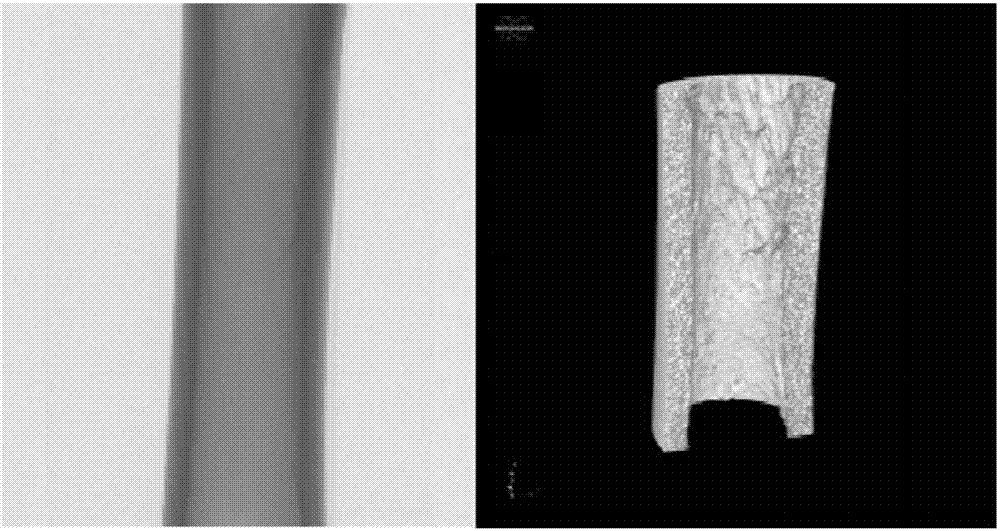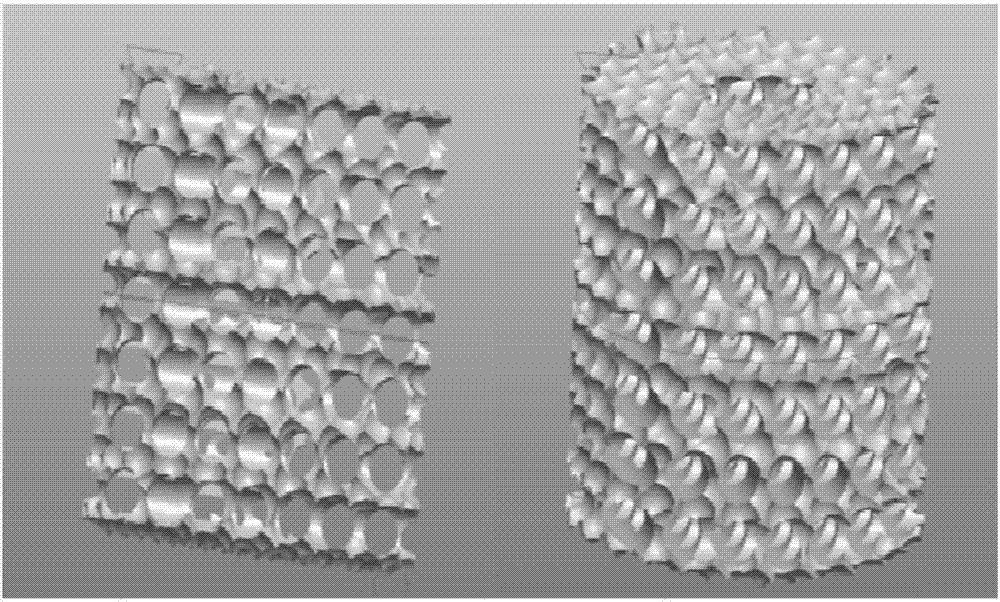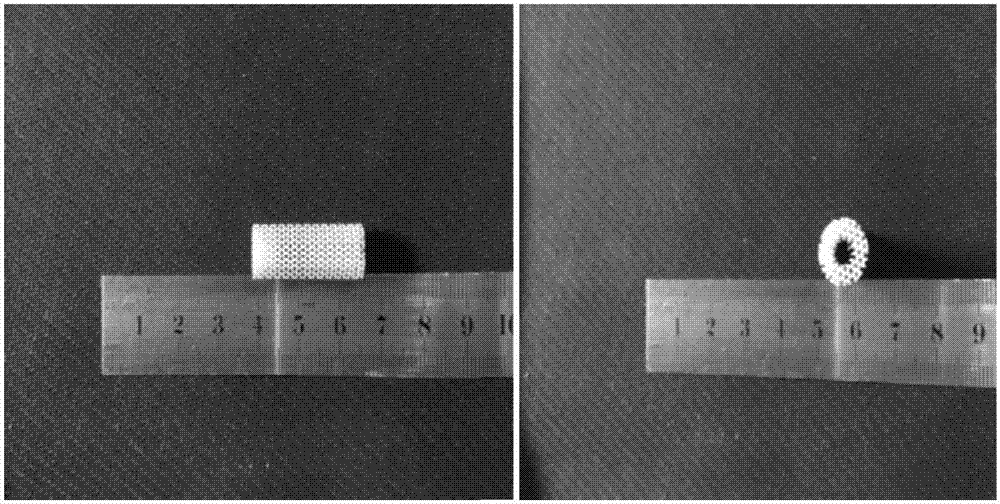Bone repair biological ceramic scaffold material formed through individualized customization based on photocuring 3D printing technology and preparation method of bone repair biological ceramic scaffold material
A 3D printing and bioceramic technology, applied in the direction of prosthesis, tissue regeneration, additive processing, etc., can solve the problems of uncontrollable porosity of gradient composite materials, insufficient coping, and long material time. Accurate porosity and good biocompatibility
- Summary
- Abstract
- Description
- Claims
- Application Information
AI Technical Summary
Problems solved by technology
Method used
Image
Examples
Embodiment Construction
[0055] The following canine femoral shaft HA / ZrO 2 The bioceramic scaffold material is taken as an example to describe the present invention in detail.
[0056] 1.1 Animal model of femoral shaft defect
[0057] Male adult Beagle dogs weighing 7.3±1.2 kg were used in the experiment. According to the critical value of canine femoral diaphysis bone defect of 15 mm, 15 mm of the middle section of canine femur was amputated in the experiment to establish the femoral diaphysis defect model. Operation method: Fasting for 12 hours before the operation, intravenous anesthesia with 3% pentobarbital sodium (1 ml / kg), after anesthesia, endotracheal intubation, and continuous oxygen inhalation during the operation. The skin in the surgical area was depilated, cleaned, disinfected, and draped. An incision about 8 cm in the lateral femur of the right lower extremity was taken, and the skin and subcutaneous tissue were cut layer by layer. Hemostasis was achieved by electrocoagulation. The th...
PUM
| Property | Measurement | Unit |
|---|---|---|
| flexural strength | aaaaa | aaaaa |
| flexural strength | aaaaa | aaaaa |
| compressive strength | aaaaa | aaaaa |
Abstract
Description
Claims
Application Information
 Login to View More
Login to View More - R&D
- Intellectual Property
- Life Sciences
- Materials
- Tech Scout
- Unparalleled Data Quality
- Higher Quality Content
- 60% Fewer Hallucinations
Browse by: Latest US Patents, China's latest patents, Technical Efficacy Thesaurus, Application Domain, Technology Topic, Popular Technical Reports.
© 2025 PatSnap. All rights reserved.Legal|Privacy policy|Modern Slavery Act Transparency Statement|Sitemap|About US| Contact US: help@patsnap.com



